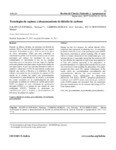
Please use this identifier to cite or link to this item:
http://ricaxcan.uaz.edu.mx/jspui/handle/20.500.11845/923Full metadata record
| DC Field | Value | Language |
|---|---|---|
| dc.contributor | 51550 | es_ES |
| dc.contributor.other | https://orcid.org/0000-0002-1483-1791 | - |
| dc.coverage.spatial | Global | es_ES |
| dc.creator | Saldívar Esparza, Santiago | - |
| dc.creator | Cabrera Robles, José Salvador | - |
| dc.creator | Reta Hernández, Manuel | - |
| dc.date.accessioned | 2019-04-03T16:34:22Z | - |
| dc.date.available | 2019-04-03T16:34:22Z | - |
| dc.date.issued | 2017-09 | - |
| dc.identifier | info:eu-repo/semantics/publishedVersion | es_ES |
| dc.identifier.issn | 2410-356X | es_ES |
| dc.identifier.uri | http://ricaxcan.uaz.edu.mx/jspui/handle/20.500.11845/923 | - |
| dc.identifier.uri | https://doi.org/10.48779/hnzx-q992 | - |
| dc.description | During the last few decades, the carbon dioxide (CO2) emissions have increased in alarming way. A concerning problem is that CO2 is one of the greenhouse gases (GHG) that mostly contribute to global warming. One of many efforts to reduce emissions of this contaminant gas, is to increase the use of renewable energy but the transition will be slow. Before the transition is significant, large quantities of CO2 will continue appearing in the atmosphere. A possible alternative is to capture and store the CO2 in a safe way to prevent it from reaching the atmosphere. This paper presents the three used CO2 capture technologies in the world, which are: precombustión, oxicombustión and postcombustión; likewise, the costs associated with implementing these technologies in supercritical pulverized coal boilers (SCPC), integrated gasification combined cycle (IGCC) plants, and natural gas combined cycle (NGCC) plants, are presented. Also are mentioned the main considerations for the transport and storage of CO2 from capture plants. | es_ES |
| dc.description.abstract | Durante las últimas décadas, las emisiones de dióxido de carbono (CO2) se han ido incrementado de una manera alarmante. El problema es que el CO2 es uno de los gases de efecto invernadero (GEI) que más contribuye al calentamiento global. Uno de tantos esfuerzos que se están realizando por reducir las emisiones de este gas contaminante, es incrementar el uso de las energías renovables, pero la transición será muy lenta. Se seguirán emitiendo grandes cantidades antes de que dicha transición sea significativa. Es por eso que una alternativa viable es capturar y almacenar el CO2 de una manera segura para impedir que vuelva a liberarse a la atmósfera. En este trabajo se presentan las tres tecnologías de captura de CO2 usadas en el mundo, las cuales son: precombustión, oxicombustión y postcombustión; así mismo, se presentan los costos asociados en la implementación de estas tecnologías en plantas de calderas de carbón pulverizado (CCP), en plantas de ciclo combinado de gasificación integrada (CCGI) y en plantas de gas natural de ciclo combinado (GNCC). También se mencionan las consideraciones para el trasporte y almacenamiento del CO2 desde las plantas de captura. | es_ES |
| dc.language.iso | spa | es_ES |
| dc.publisher | ECORFAN-Bolivia | es_ES |
| dc.relation | http://www.ecorfan.org/bolivia/researchjournals/Ciencias_Naturales_y_Agropecuarias/vol4num12/Revista_de_Ciencias_Naturales_y_Agropecuarias_V4_N12.pdf | es_ES |
| dc.relation.uri | generalPublic | es_ES |
| dc.rights | Atribución-NoComercial-CompartirIgual 3.0 Estados Unidos de América | * |
| dc.rights.uri | http://creativecommons.org/licenses/by-nc-sa/3.0/us/ | * |
| dc.source | Revista de Ciencias Naturales y Agropecuarias Vol.4 No.12, pp. 22-34 | es_ES |
| dc.subject.classification | INGENIERIA Y TECNOLOGIA [7] | es_ES |
| dc.subject.other | Captura | es_ES |
| dc.subject.other | dióxido de carbono | es_ES |
| dc.subject.other | precombustión | es_ES |
| dc.subject.other | oxicombustión | es_ES |
| dc.subject.other | postcombustión | es_ES |
| dc.subject.other | CCS | es_ES |
| dc.subject.other | CO2 | es_ES |
| dc.subject.other | precombustion | es_ES |
| dc.subject.other | oxycombustion | es_ES |
| dc.subject.other | postcombustion | es_ES |
| dc.title | Tecnologías de captura y almacenamiento de dióxido de carbono | es_ES |
| dc.type | info:eu-repo/semantics/article | es_ES |
| Appears in Collections: | *Documentos Académicos*-- UA Ingeniería Eléctrica | |
Files in This Item:
| File | Description | Size | Format | |
|---|---|---|---|---|
| Tecnologías de captura y almacenamiento de dióxido de carbono.pdf | 492,04 kB | Adobe PDF |  View/Open |
This item is licensed under a Creative Commons License
